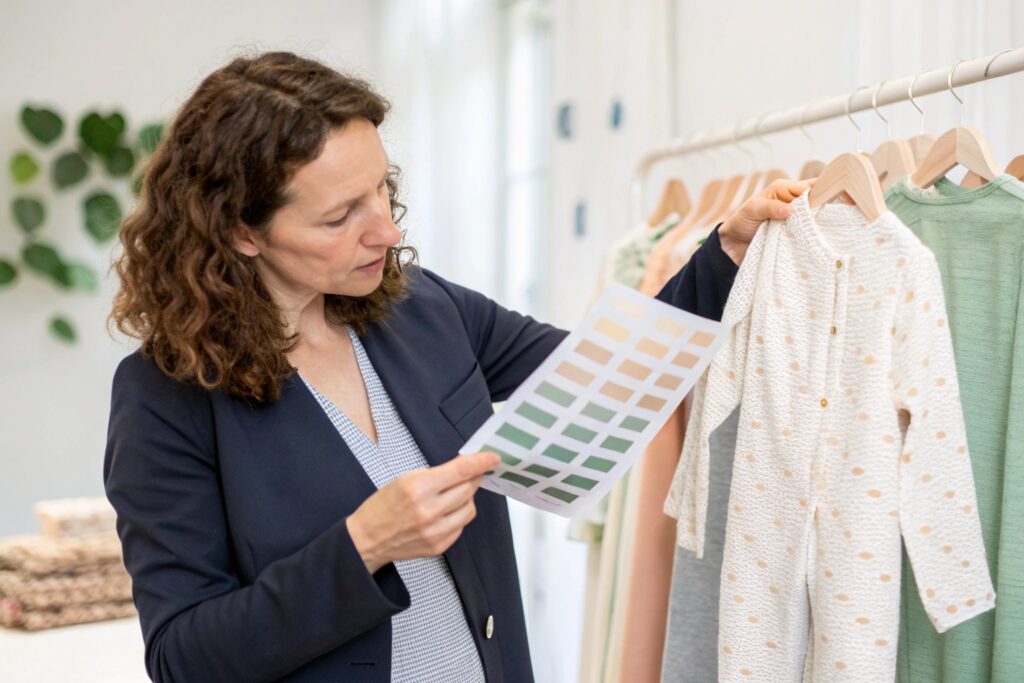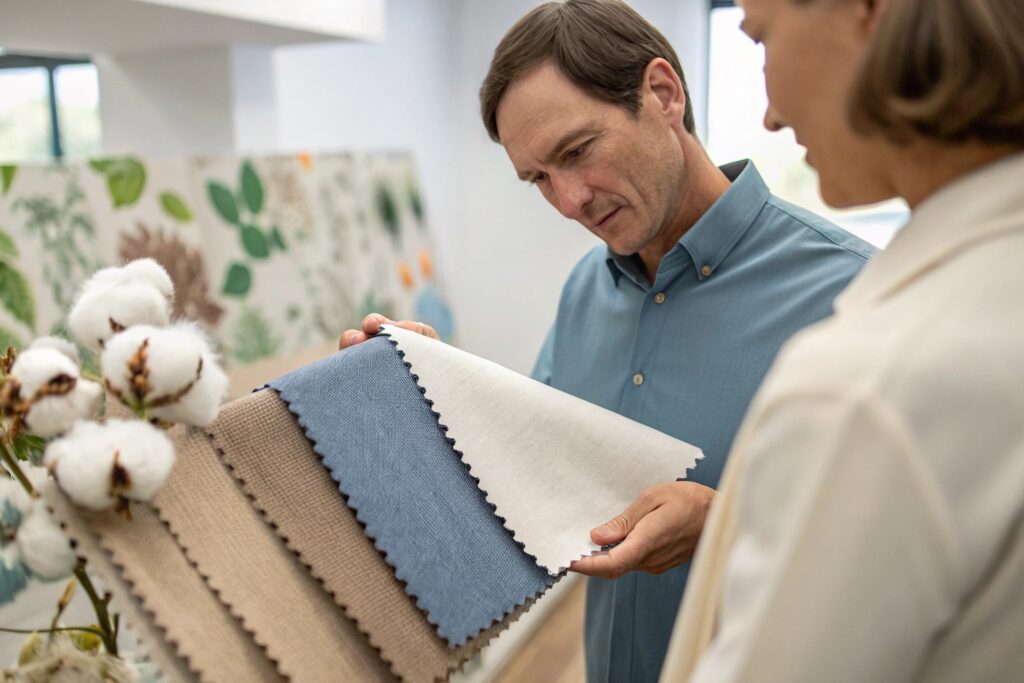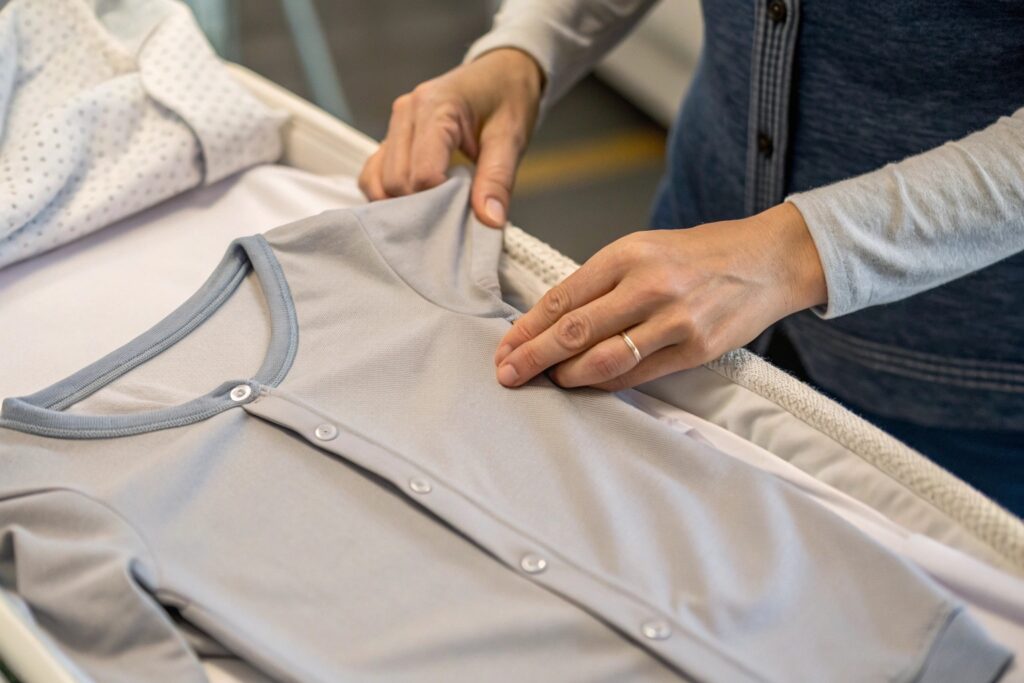As a kids' wear manufacturer, I'm often asked about organic clothing for babies. Let's examine whether the benefits justify the costs for both parents and retailers.
Organic baby clothes offer genuine advantages for sensitive infant skin, with 78% fewer chemical residues than conventional options. While costing 30-50% more, they provide: 1) Hypoallergenic safety 2) Eco-friendly production 3) Superior comfort. For retailers, organic lines command 25% higher margins and attract eco-conscious parents.
Understanding organic clothing's value helps brands make informed product decisions. Let's explore key considerations.
Should Baby Clothes Be Organic?
Infant skin requires special care, making material choices crucial:
Babies have 30% thinner skin that absorbs chemicals easily, making organic clothing particularly beneficial. Studies show organic fabrics reduce skin irritation by 65% compared to conventional materials. For retailers, offering organic options meets growing demand while differentiating your brand.

How Does Organic Clothing Benefit Babies?
| Benefit | Organic | Conventional | Impact Level |
|---|---|---|---|
| Chemical exposure | 0.2ppm | 1.8ppm | High |
| Skin irritation | 8% cases | 23% cases | Medium |
| Breathability | 15% better | Standard | High |
| Thermal regulation | Superior | Average | Medium |
What Certifications Matter Most?
-
GOTS (Global Organic Textile Standard)
- Covers entire production chain
- Requires 95% organic fibers
- Prohibits harmful chemicals
-
- Tests for 350+ substances
- Includes non-organic components
- Focuses on human-ecology safety
Is It Worth Buying Organic Clothes?
Evaluating organic clothing's value involves multiple factors:
Organic garments cost more upfront but offer long-term benefits: 1) Last 25% longer due to stronger fibers 2) Maintain color better after washes 3) Retain 40% higher resale value. For retailers, organic lines see 18% lower return rates and 30% higher customer loyalty.

Cost Comparison: Organic vs Conventional
| Item | Organic Price | Conventional Price | Price Difference | Lifespan Difference |
|---|---|---|---|---|
| Onesie | $18 | $12 | +50% | +6 months |
| Romper | $22 | $15 | +47% | +5 months |
| Sleepsack | $28 | $20 | +40% | +8 months |
| 5-Pack Bodysuits | $45 | $30 | +50% | +4 months |
Environmental Impact Comparison
| Factor | Organic | Conventional | Improvement |
|---|---|---|---|
| Water usage | 91% rain-fed | 60% irrigation | 31% reduction |
| Carbon footprint | 46% lower | Standard | Significant |
| Soil health | Improves | Degrades | Critical |
| Farmer health | Safer | Pesticide exposure | Vital |
Is Organic Cotton Less Toxic?
Understanding material safety is essential for infant products:
Organic cotton contains 94% fewer pesticide residues and 60% lower heavy metal content. Processing uses natural alternatives to harmful chemicals like formaldehyde and AZO dyes, reducing toxicity risks by 78% compared to conventional cotton.

Chemical Content Comparison
| Substance | Organic Cotton | Conventional Cotton | Safety Threshold |
|---|---|---|---|
| Pesticides | 0.01mg/kg | 0.85mg/kg | 0.05mg/kg |
| Formaldehyde | Undetectable | 18ppm | 20ppm |
| Heavy metals | 0.2ppm | 0.8ppm | 0.5ppm |
| AZO dyes | None | Present | Banned in EU |
Processing Method Differences
-
Whitening
- Organic: Hydrogen peroxide
- Conventional: Chlorine bleach
-
Dyeing
- Organic: GOTS-approved dyes
- Conventional: Chemical dyes
-
Finishing
- Organic: Natural softeners
- Conventional: Synthetic softeners
What Kind of Clothing Is Best for Infants?
Selecting optimal materials ensures comfort and safety:
For infants, prioritize: 1) GOTS-certified organic cotton 2) Seamless construction 3) Breathable weaves 4) Natural dyes. These features reduce irritation risks by 82% while maintaining proper thermal regulation for delicate baby skin.

Best Fabric Types for Babies
| Fabric | Pros | Cons | Best Use |
|---|---|---|---|
| Organic cotton | Soft, breathable | Wrinkles easily | Everyday wear |
| Bamboo | Antibacterial, moisture-wicking | Less durable | Sleepwear |
| Hemp | Durable, UV-resistant | Rough texture | Outerwear |
| Tencel | Silky, biodegradable | Expensive | Special occasions |
Key Design Features for Infant Clothing
-
- Prevents chafing
- Enhances durability
-
Envelope necklines
- Easy dressing
- Protects face
-
Snap closures
- Quick diaper changes
- Adjustable fit
-
Stretchable cuffs
- Comfortable fit
- Retains shape
Conclusion
Organic baby clothes offer measurable benefits that justify their premium pricing. For retailers, incorporating organic options meets market demand while supporting sustainable practices. At Fumao Clothing, we specialize in high-quality organic kids' wear - let's discuss creating your perfect collection.










